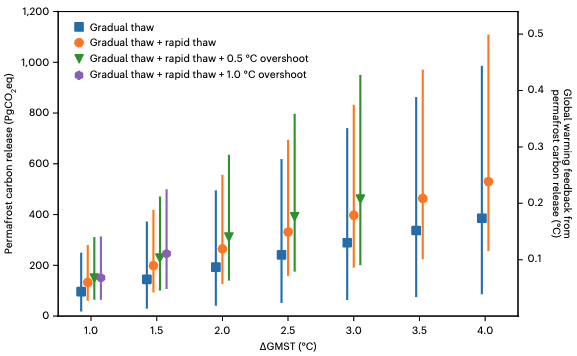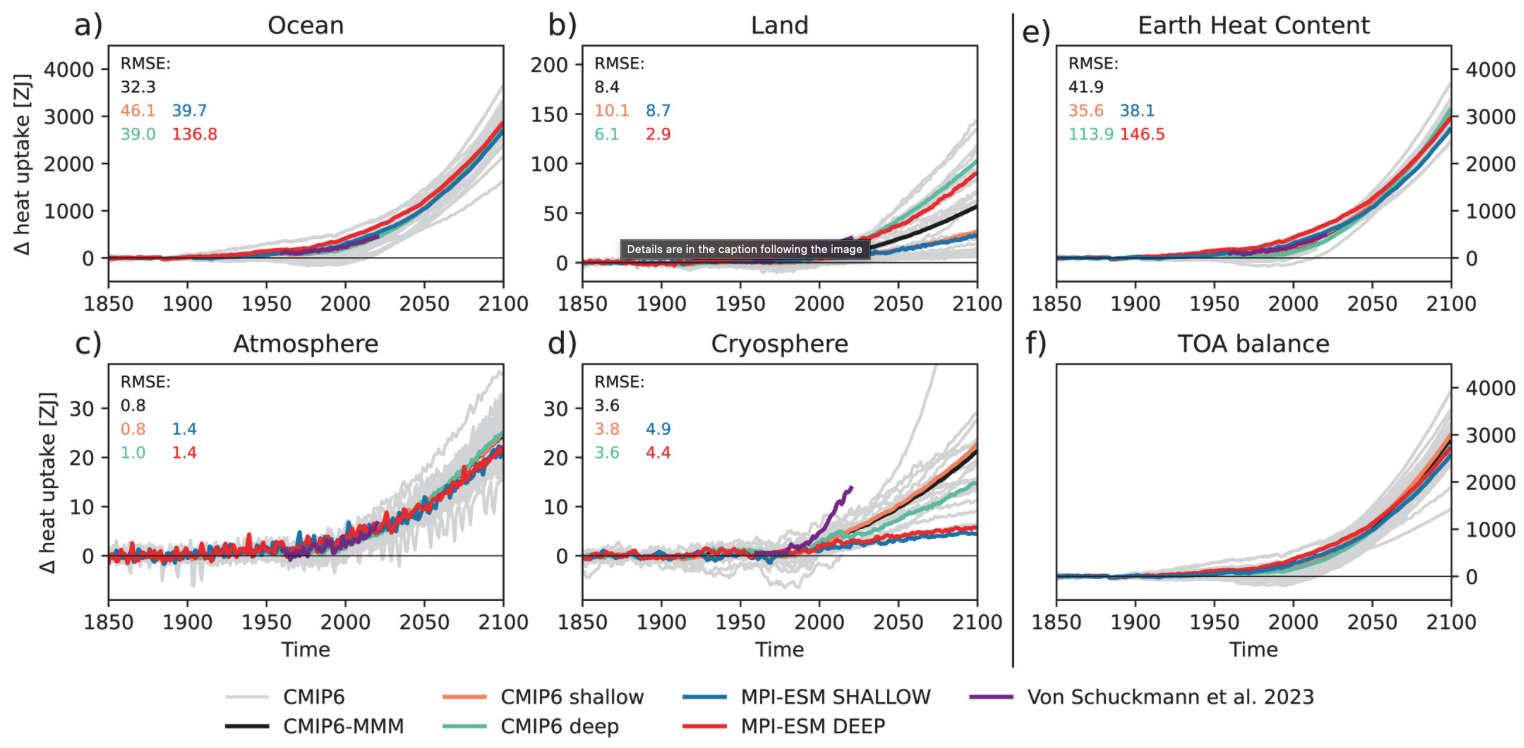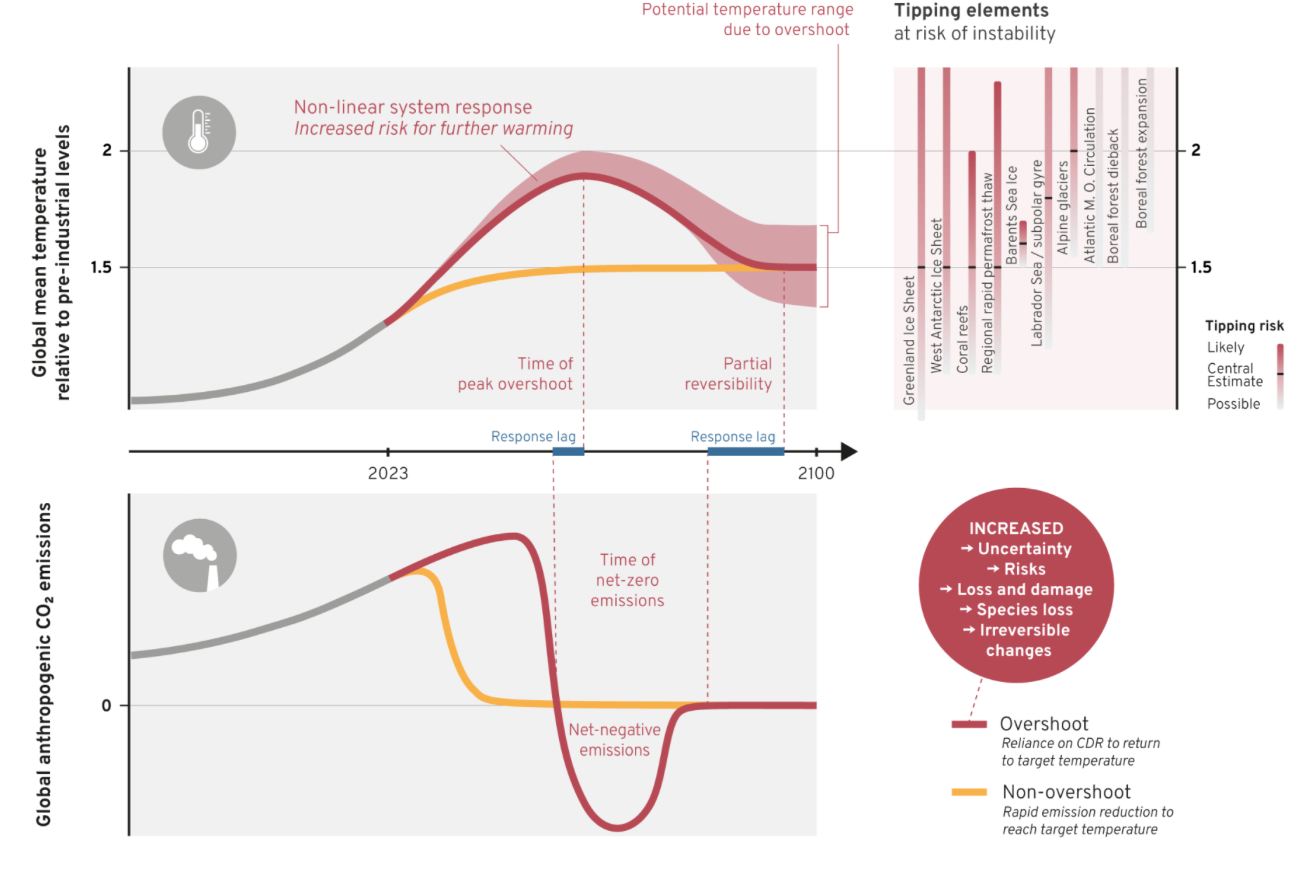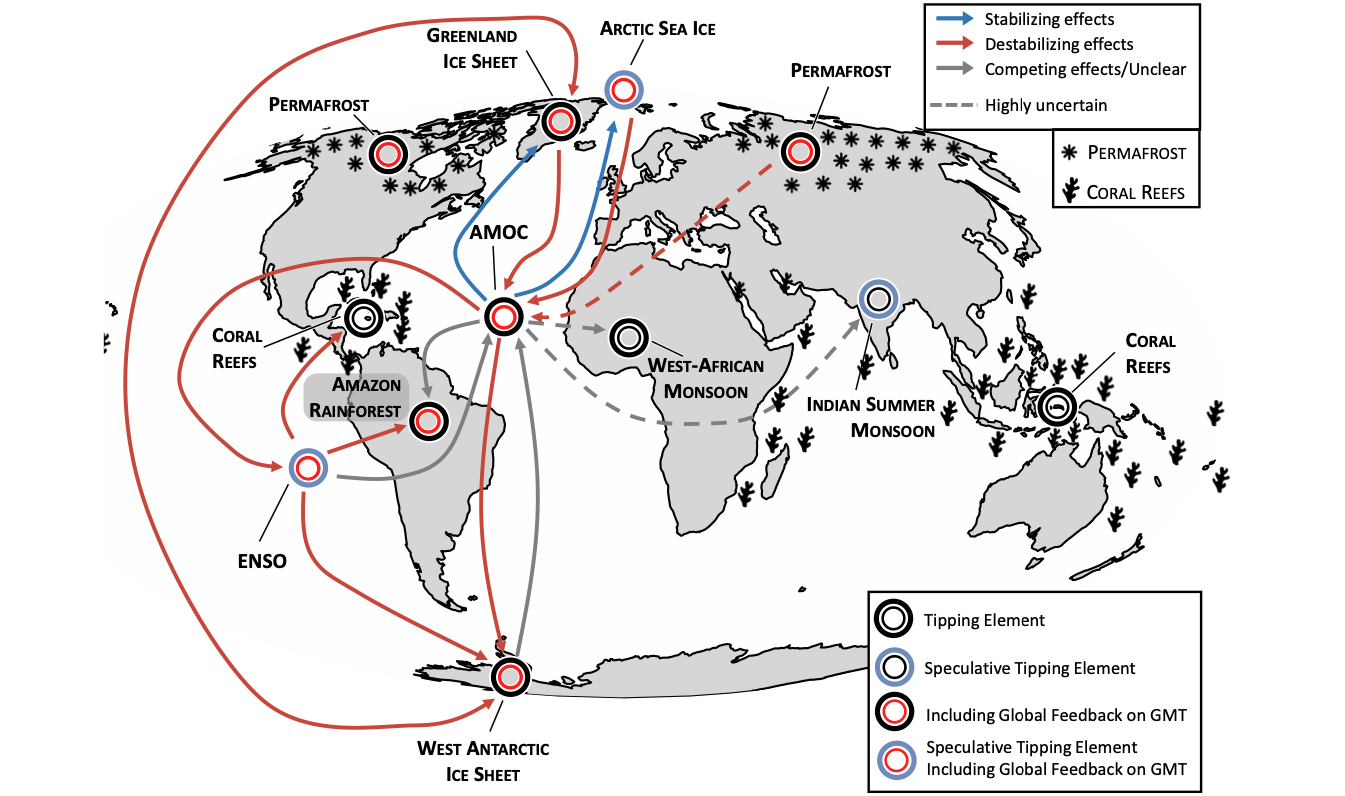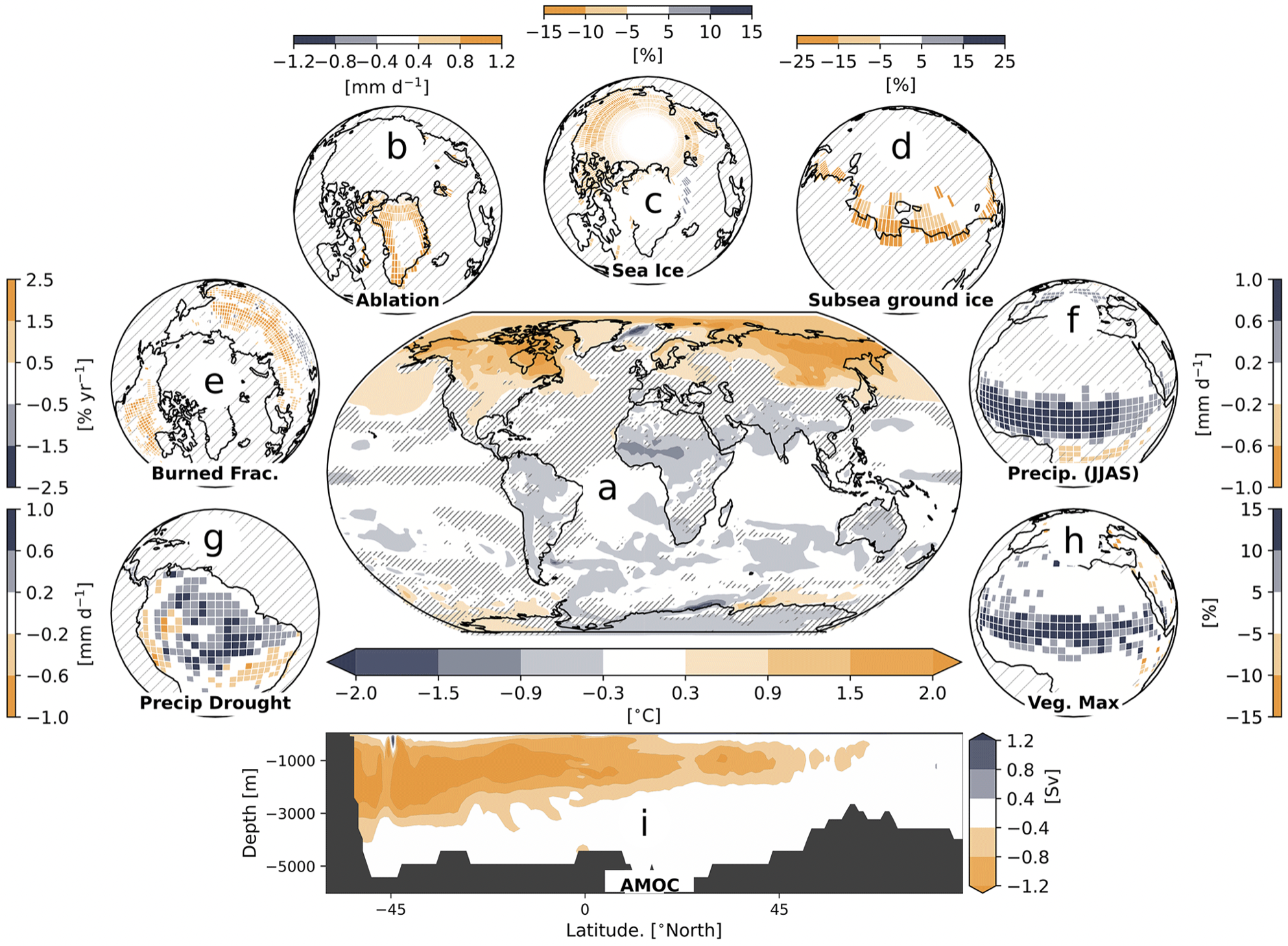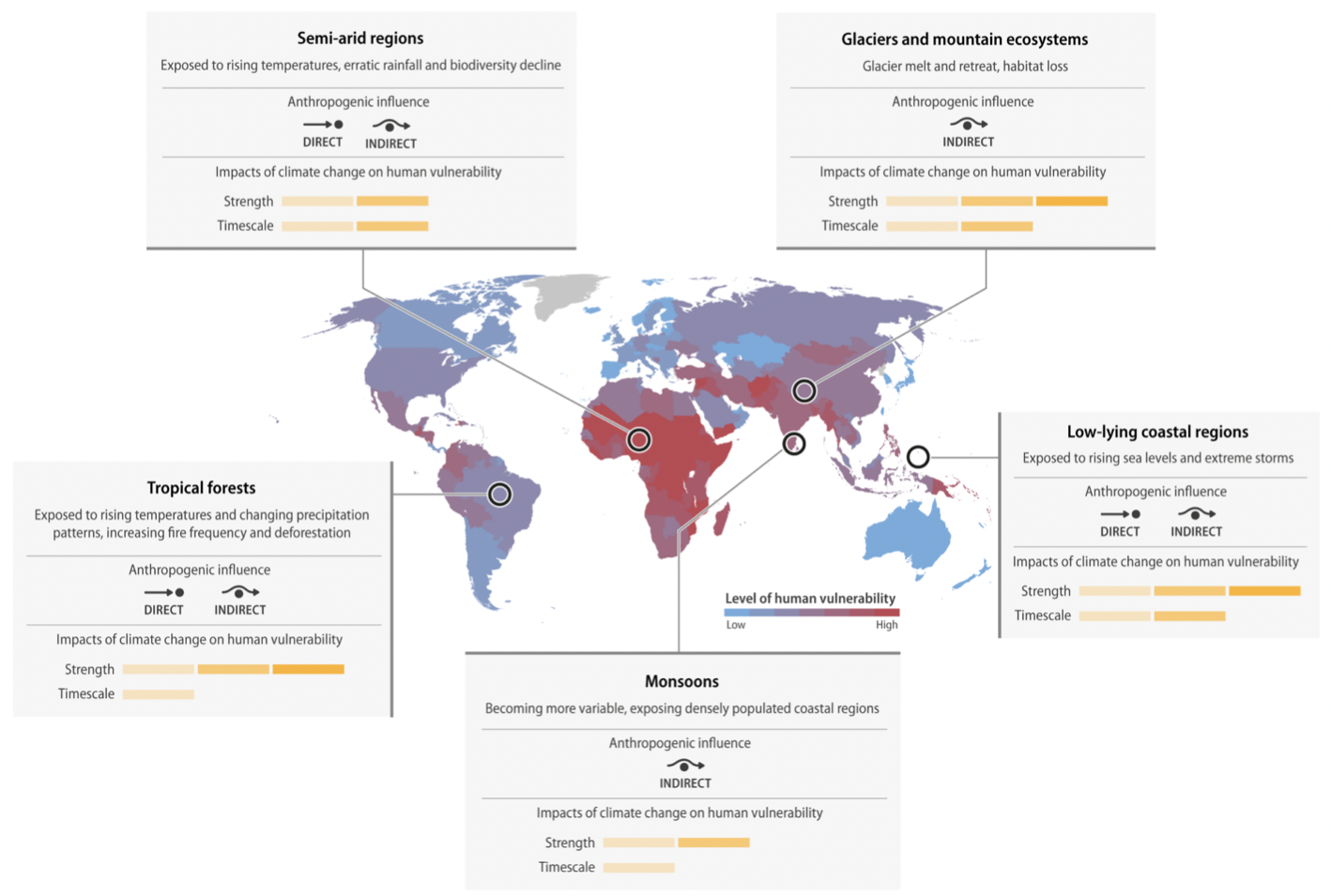Research Highlights
1. Overconfidence in climate overshoot
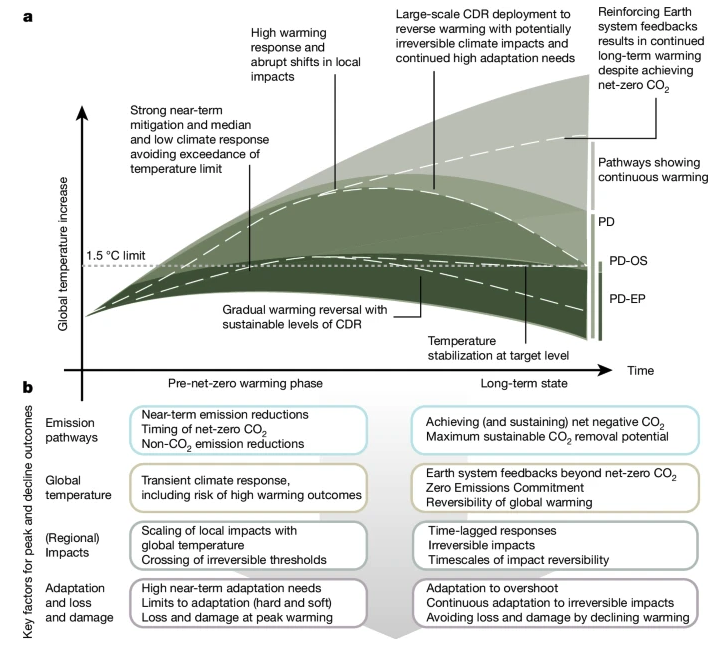
Global emission reduction efforts continue to be insufficient to meet the temperature goal of the Paris Agreement. This makes the systematic exploration of so-called overshoot pathways that temporarily exceed a targeted global warming limit before drawing temperatures back down to safer levels a priority for science and policy. Here we show that global and regional climate change and associated risks after an overshoot are different from a world that avoids it. We find that achieving declining global temperatures can limit long-term climate risks compared with a mere stabilization of global warming, including for sea-level rise and cryosphere changes. However, the possibility that global warming could be reversed many decades into the future might be of limited relevance for adaptation planning today. Temperature reversal could be undercut by strong Earth-system feedbacks resulting in high near-term and continuous long-term warming. To hedge and protect against high-risk outcomes, we identify the geophysical need for a preventive carbon dioxide removal capacity of several hundred gigatonnes. Yet, technical, economic and sustainability considerations may limit the realization of carbon dioxide removal deployment at such scales. Therefore, we cannot be confident that temperature decline after overshoot is achievable within the timescales expected today. Only rapid near-term emission reductions are effective in reducing climate risks.
